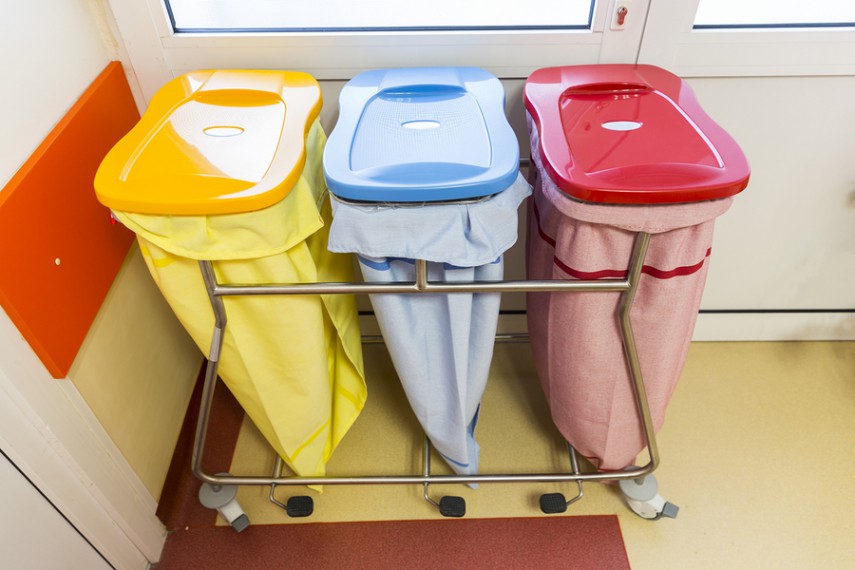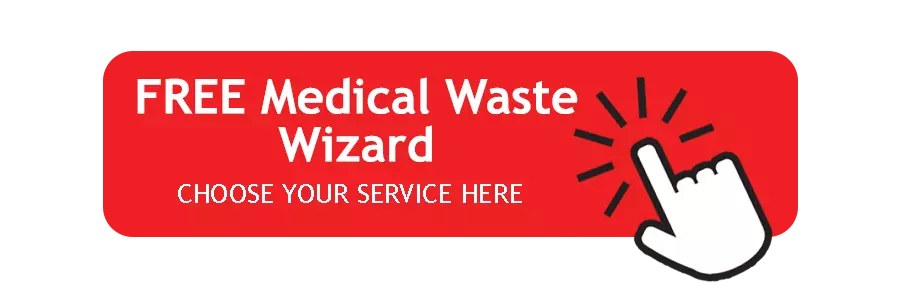Streamlining Workflows in Healthcare

In healthcare, few things are as essential to improving your efficiency, cutting costs, and enhancing patient care as streamlining your workflows. When workflows run smoothly, your healthcare facility can make the most of your resources, avoid delays, and provide better care to your patients.
With this in mind, let’s explore different ways to simplify your healthcare workflows and how a solid waste management plan can help you achieve these goals.
The Importance of Simplifying Workflows
Efficient workflow management can make or break the operational success of healthcare facilities. Having the proper workflows improves productivity and quality of care in patient records, clinical supplies, and surgical procedures. By making sure everything is streamlined, you can cut out redundancy, eliminate unnecessary steps, and make sure each task is done in the most efficient way.
By simplifying your everyday processes, you can save your healthcare facility time and resources, ultimately leading to better patient experiences in the long term. In fact, studies published in the National Library of Medicine have shown that facilities with optimized workflows tend to have shorter patient wait times and make more effective use of their staff and equipment.
For example, an organized waste management plan is crucial for handling hazardous materials safely and efficiently. Without a proper system, disposing of waste can be a complex and time-consuming task that takes healthcare team members away from their main jobs. By having a customized plan in place, waste can be handled quickly and in line with regulations, freeing staff to focus on caring for patients.
Best Practices for Workflow Management
Standardize Processes
One of the most effective ways to streamline workflows is to establish standardized processes and protocols across the facility. Consistency in procedures not only saves time but also reduces errors, as staff know exactly what steps to follow for each task. Standard operating procedures (SOPs) bring uniformity to tasks ranging from patient check-ins to surgical operations. This way, everyone in an operation is trained to follow the same routines.
For instance, you can create an SOP around how your staff handles medical waste and pair it with the use of a professional provider to manage your waste disposal. This will not only help reduce delays in this area, but it’ll also enable everyone on your team to follow the same steps when handling hazardous materials. This prevents potential disruptions in care and ensures a smooth, consistent process.
Define Roles & Responsibilities
Role clarity is another important aspect of streamlining workflows. When healthcare team members know their exact roles and the expectations surrounding them, it reduces confusion and ensures everyone works efficiently toward the same goal. Clear role definitions also foster better communication and collaboration, as there’s less overlap and fewer delays due to unclear task assignments.
When your team has enough on their plate, you can also clearly define which tasks to delegate to external partners. One of the most obvious examples of this is the waste management aspect of your facility. By hiring a provider specialized in medical waste management, you can ensure all your hazardous materials like sharps, biohazardous waste, pharmaceutical waste, and chemotherapy waste are properly handled. Additionally, having a reliable partner to oversee your medical waste disposal plan frees up healthcare staff for other things, which further streamlines operations.
Both approaches enhance accountability and efficiency, allowing your team to focus on patient care while maintaining strict safety protocols.
Staff Appropriately
In addition to clearly defining roles and responsibilities, it’s essential to staff positions appropriately. When healthcare facilities are under- or over-staffed, workflow efficiency can be compromised. Staff shortages can lead to multitasking, which often results in burnout, mistakes, and longer wait times for patients.
On the other hand, overstaffing can lead to wasted resources. This principle applies to all departments, including medical waste management. Having facilities hire internal staff or work with external contractors for waste disposal helps clinical staff focus on patient care instead of getting distracted by waste disposal tasks.
Leverage Technology
Technology is a powerful tool in streamlining healthcare workflows. Everything from practice management software to inventory management systems simplify otherwise time-consuming tasks. By automating some of your manual work, your practice can cut down on paperwork and improve cross-department communication.
For example, Electronic Health Records (EHRs) let healthcare workers access patient records quickly, saving search time. Likewise, inventory software ensures medical supplies like waste disposal supplies are well-stocked, avoiding care delays. Moreover, tailored software can track medical waste in real-time to help simplify disposal and ensure regulatory compliance.
Schedule Regular Evaluations & Make Improvements
Continuous evaluation is crucial for maintaining streamlined workflows in healthcare. Regular assessments can help facilities find areas to improve and make changes. These evaluations should consider patient outcomes, employee performance, and resource utilization.
For example, a facility might discover that certain tasks, like medical waste disposal, are taking longer than necessary or causing delays in other processes. They might choose better waste management. This could mean outsourcing to a specialized provider or using more efficient disposal equipment.
Regular workflow evaluations can also identify ways to cut costs, like streamlining staff schedules, automating routine tasks, or minimizing material waste. These improvements not only enhance operational efficiency but also lead to higher-quality patient care.
How to Prevent Workflow Disruptions
Even with the best plans in place, healthcare workflows can be disrupted by unforeseen events or operational issues. The key to avoiding major disruptions is to plan ahead and be prepared for the unexpected. By identifying potential challenges early, healthcare facilities can prevent workflow disruptions and ensure patient care continues uninterrupted. Here are some tips to prevent workflow interruptions:
- Improve communication: Open communication between departments can prevent misunderstandings and improve operations. Encourage team members to report any issues or delays immediately to allow for quicker resolutions.
- Foster collaboration among teams: Cross-functional collaboration can enhance efficiency, particularly when roles overlap or require joint effort. For example, medical waste management might involve clinical staff, janitorial teams, and external vendors working together.
- Develop contingency plans: Healthcare facilities should plan for unexpected problems like equipment failures or a sudden influx of emergency patients. A backup plan helps ensure they can operate efficiently under pressure.
Let Medical Waste Pros Help Streamline Your Waste Workflows
Inefficient workflows can drag a healthcare operation down, affecting the satisfaction of your staff and even hurting your bottom line. Where possible, our medical waste experts are ready to provide your team with safe and secure medical waste disposal so your staff can focus their energy on what’s important: patient care. Fill out our form or give us a call at (888) 755-6370 to find a provider near you.










